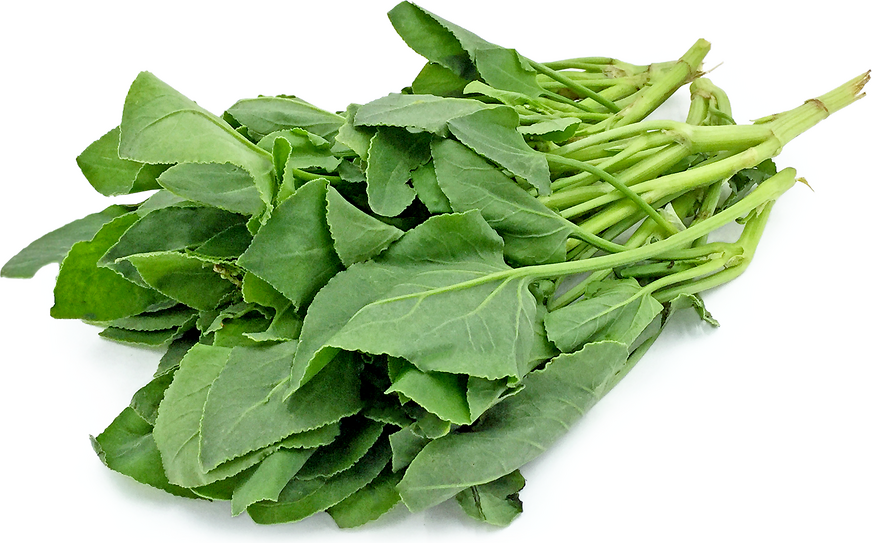


Chukka Leaves
Estimated Inventory, bunch : 0
Description/Taste
Chukka leaves are medium to large in size and broad, thin, oblong, and arrow-shaped, averaging 6-15 centimeters in length. Chukka leaves look similar to spinach with a smooth texture and dark green surface, but they have thicker and juicer stems. Chukka leaves have a tart, green, and grassy flavor with notes of citrus. Chukka is sharp and slightly astringent due to the high levels of oxalic acid present in the plant, and the younger leaves are less acidic.
Seasons/Availability
Chukka leaves are available year-round in sub-tropical climates, with a peak season during the summer.
Current Facts
Chukka leaves, botanically classified as Rumex vesicarius, grow on a leafy perennial and are members of the Polygonaceae family along with buckwheat and rhubarb. Also known as Narrow-leaved dock, Spinach dock, Khatta palak, Ambat chukka, Indian Sorrel, and Chukka Kura in India, the Chukka plant is solely cultivated for its leaves and is most commonly known as Green sorrel. It has been used since ancient times both medicinally to aid in digestion and for culinary purposes to add a tart flavor to rich and hearty foods.
Nutritional Value
Chukka leaves are high in vitamin C, calcium, magnesium, and potassium. They also contain beta-carotene and lutein.
Applications
Chukka leaves can be consumed both raw and in cooked applications such as steaming, sautéing, frying, and boiling. They can be steamed or shredded and used in salads or boiled in soups, stews, and curries. Chukka leaves can also be sautéed with spices such as cumin and red chiles and served over rice or battered and deep-fried as a side dish. In addition, the leaves can be chopped and mixed into dressings and marinades. Chukka leaves pair well with onions, leeks, tomatoes, potatoes, lentils, peanuts, spinach, walnuts, peanuts, garlic, bulgur, plums, eggs, smoked and oily fish, veal, goose, yogurt, sour cream, and goat cheese. Chukka leaves will keep for a couple of days when stored loosely wrapped in a paper towel, in a plastic bag, and in the refrigerator.
Ethnic/Cultural Info
Chukka was commonly used by the Romans and the Egyptians to add acidity and a tart flavor to help balance heavy, rich food. They also boiled and ground the leaves into teas and pastes to reduce symptoms of ulcers, scurvy, fevers, and to help aid in digestion.
Geography/History
Chukka leaves are native to the Mediterranean and quickly spread to France, Greece, Egypt, and the Caribbean. Today Chukka leaves can be found at select specialty markets in the United States, Europe, Egypt, the Caribbean, and Asia.
Recipe Ideas
Recipes that include Chukka Leaves. One




